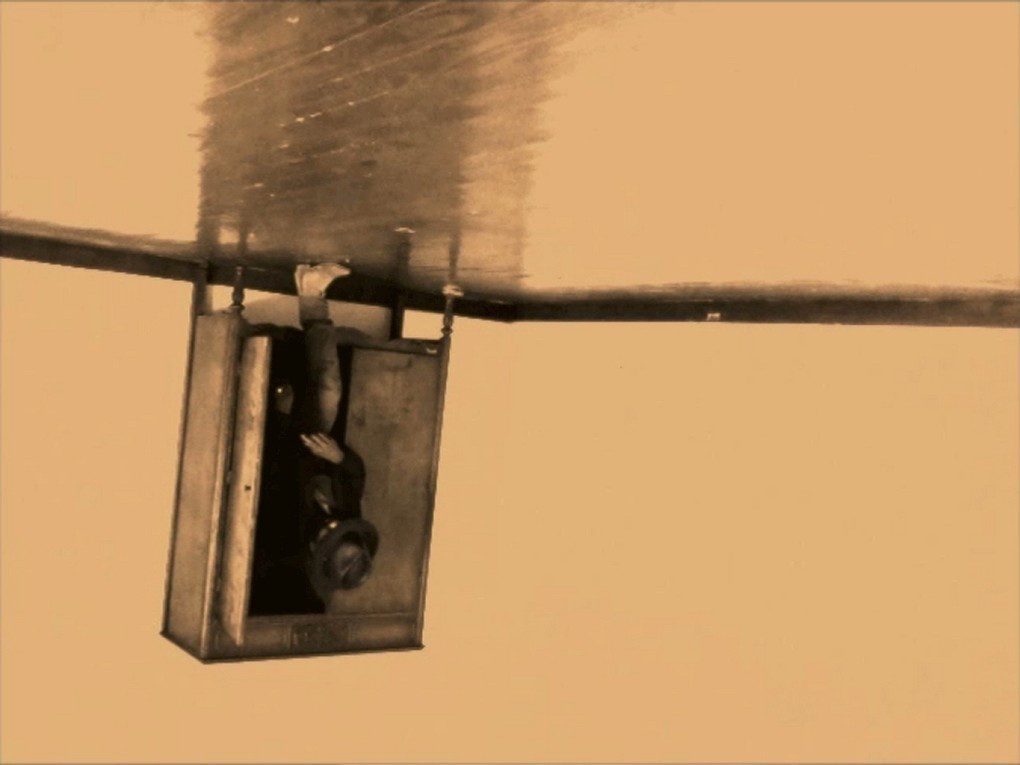Goodman Gallery, Johannesburg, South Africa
02 Jun 2018 - 14 Jul 2018

Samson Kambalu, Nester, 2017. Digital video, colour and Kinetescopi plinths / Digital video, colour and lasered plints. Edition of 3. Courtesy Goodman Gallery.
Alfredo Jaar | Broomberg and Chanarin | David Goldblatt | Ghada Amer and Reza Farkhondeh | Kendell Geers | Kiluanji Kia Henda | Mikhael Subotzky | Misheck Masamvu | mounir fatmi | Samson Kambalu | William Kentridge | Hank Willis Thomas
The life of an artwork is a curious thing. It begins with an experience or idea translated into a tangible expression by an artist. Traditionally, this has taken the form of painting, photography or sculpture, but in some instances, the process involves the artist rethinking the boundaries of these mediums as a way to explore their subject matter. The result can be a heightened encounter between the object produced, the hand that made it, and the viewer. Through this exchange, a story unfolds and, with it, new meanings are made.
Each artist featured on this exhibition uniquely grapples with this tension between perception and meaning. The constellation of artists originating from the African continent and its Diaspora also raises important questions about the literal narrative means sometimes expected from artists of African descent in today’s growing market for narrative-led art.
While Hank Willis Thomas and Mikhael Subotzky explore ‘whiteness’ as a construct within the photographic medium; Ghada Amer and Reza Farkhondeh interrogate stereotypes around female sexuality by ‘othering’ the white female form and subverting traditional ‘women’s craft’; Misheck Masamvu pushes against pressure to take a literal figurative approach in responding to socio-political issues; conceptual artists Samson Kambalu and Kendell Geers play with form to address Western ideas around the currency of African forms.
Ghada Amer and Reza Farkhondeh’s collaborative works on paper have welcomed rich interpretation. A recent review in the Mail & Guardian describes their depiction of women in seductive repose as ‘transmissible and viral, but when you start to look more closely … there’s no end to the possibilities they bring into play.’ Amer’s position: ‘If I painted a black woman or an Arab or Asian women, people would think that these groups of people are oppressed. In the west, the ‘other’ has no real importance. So, I have deliberately chosen to represent ‘white women’ as a universal stand in for ‘all women’ […] when I do this I subvert expectations and force the viewer to realise these women are not ‘others’.’
mounir fatmi’s Darkening Process also subverts expectations through its problematic depiction of ‘black face’. His short film reflects on the life of John Howard Griffin, a white civil rights activist who temporarily darkened his skin in response to heightened racial tensions during the American civil rights era. fatmi engages in an intertextual game with history, splicing footage from a sixties film inspired by Griffin’s life, with images linked to the black experience. In so doing he asks the viewer to re-examine their conceptions of blackness, whiteness and solidarity in a contemporary era which has given rise to personalities like Rachel Dolezal.
A charcoal drawing by William Kentridge conveys the bleak surrounds of a World War I war-torn landscape. The work, Untitled (Drawing from Wozzeck 35), was created for Kentridge’s production of Alban Berg’s opera, Wozzeck, which recently premiered at the Salzburg Festival. While Kentridge draws on documentary photographs of a WWI battlefield, when viewed by modern audiences, the work may also resonate with war scenes today, such as the brutal ISIS beheadings in Syria.
Broomberg and Chanarin’s The Day Nobody Died repurposes photographic film as a storytelling medium. The title alludes to a period in which the artists were embedded in Afghanistan and tasked with documenting the horrors of war. The image, an abstraction of shapes and colour, was created by unrolling and exposing a seven-metre section of film to the sun for 20 seconds. ‘The results,’ in the words of the artists, ‘deny the viewer the cathartic effect offered up by the conventional language of photographic responses to conflict and suffering.’
Misheck Masamvu’s Misheck we miss you love mother and dead twin sister takes the form of a stretcher used to transport sick people and dead bodies. Embedded in the sculpture is a letter Masamvu wrote to himself in the voice of his mother and twin sister, who died during childbirth – transforming the hand-carved stretcher into a bridge between life and death.
Samson Kambalu uses an invented form of site-specific, spontaneous filmmaking, dubbed ‘Nyau Cinema’, creating poetic vignettes that explore ‘how we might find meaning in what appears to be meaningless’ (Kambalu).
In Masking Tradition DXIII, Kendell Geers uses the image of the African mask to reinforce tropes around its reappropriated use in museological contexts. Through this gesture, Geers brings attention to the uncomfortable position these ethnographic ‘objects’ have come to occupy in our cultural dichotomy. In his other work on show, Mined, Geers casts a broken Heineken beer bottle in gold as a form of self-portraiture, imbued with subtextual reference to his white, South African identity.
For the lightbox Searching for Spain, Alfredo Jaar took a photograph from the grounds of an abandoned palace on the coast of Algeria. The ruins serve as a symbol of the economic and social disarray in which the country was left after decades of colonial rule. Looking through the hollow shell of the building, Jaar pointed his camera in the direction of Spain and the Mediterranean Sea, which tens of thousands of migrants attempt to cross each year in order to reach Europe. It is an image full of hope and despair.